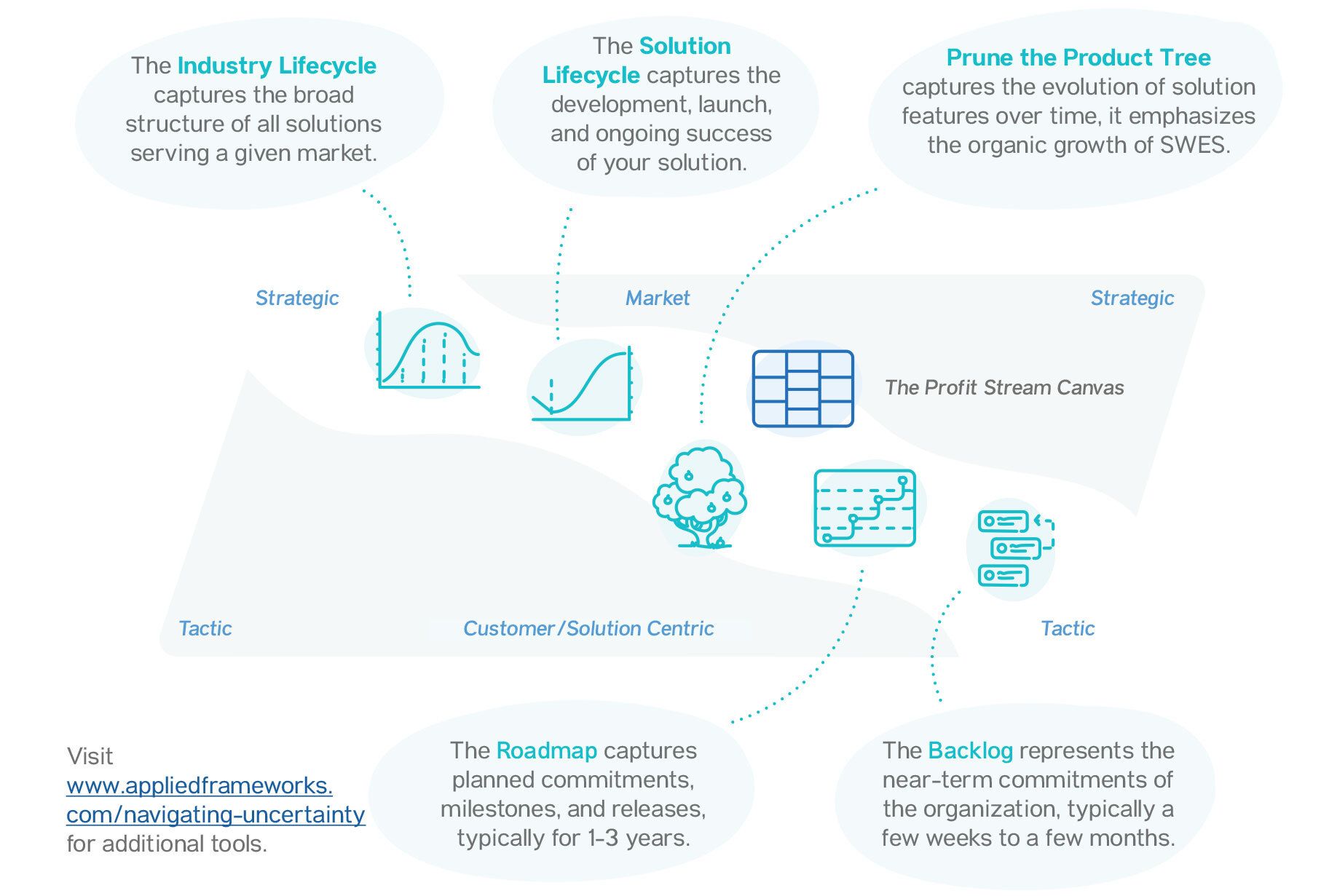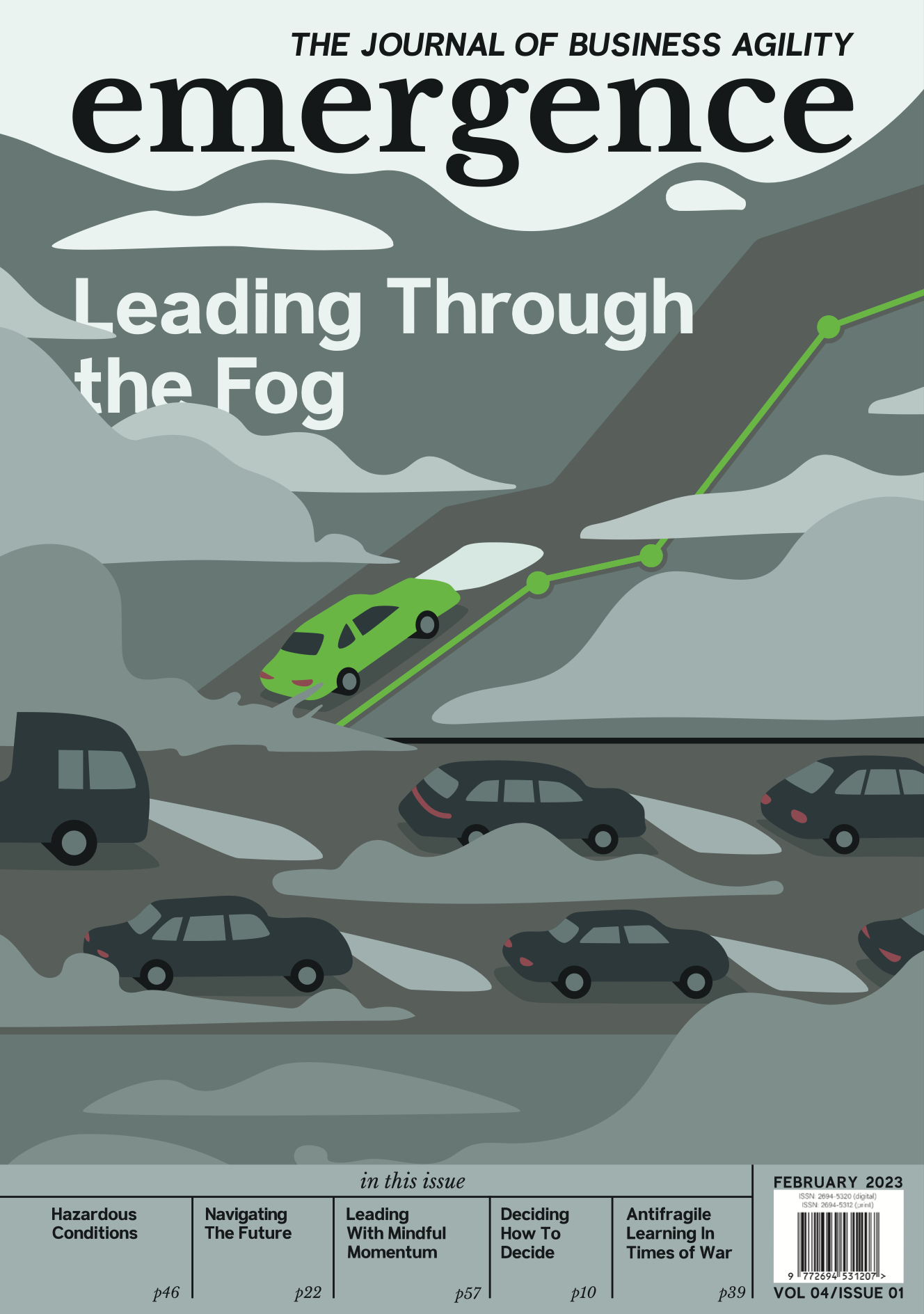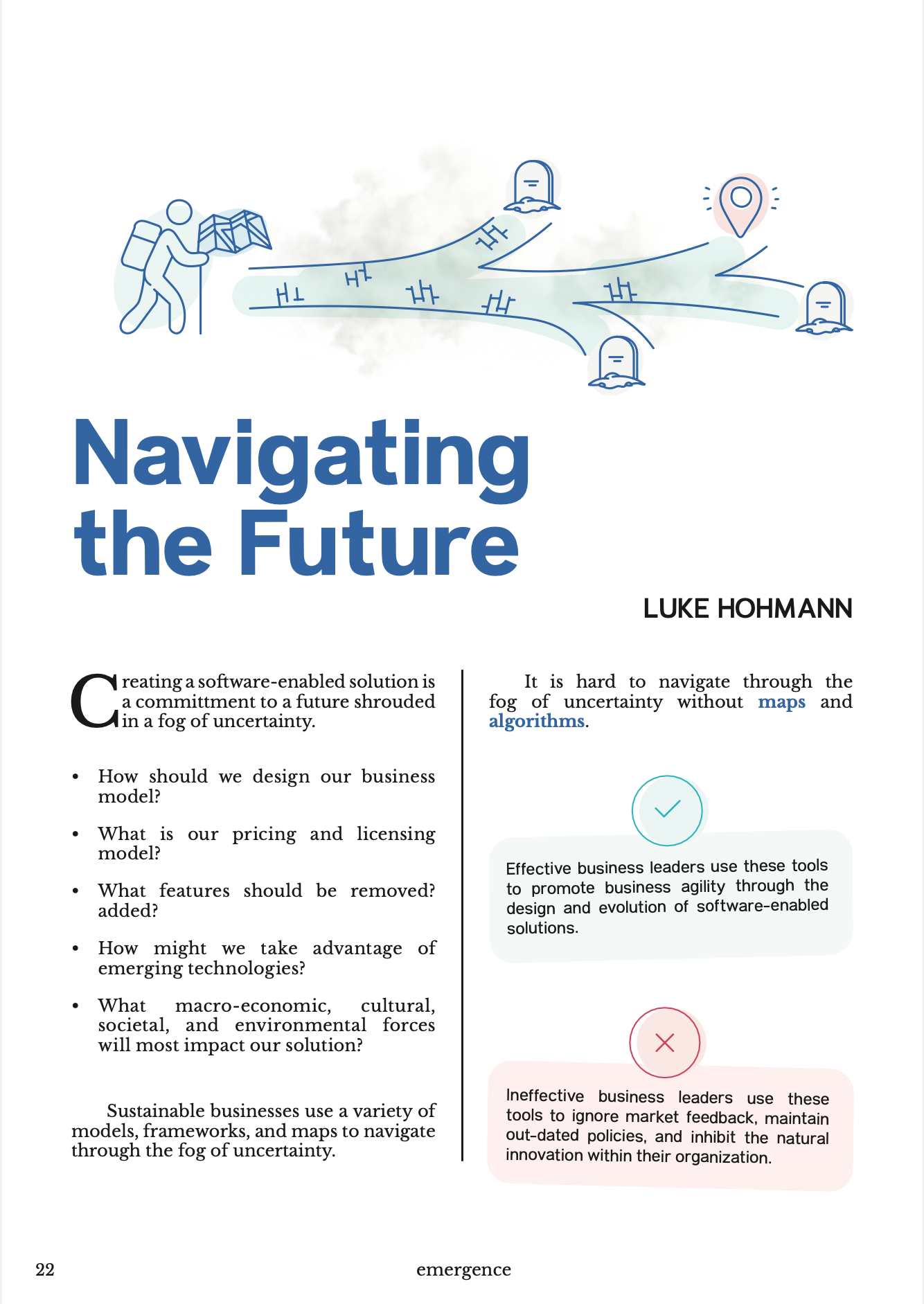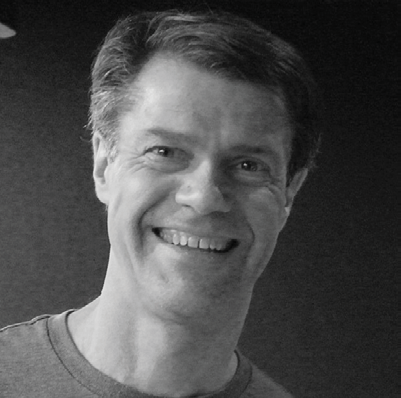Navigating the Future
Creating a software-enabled solution is a committment to a future shrouded in a fog of uncertainty.
- How should we design our business model?
- What is our pricing and licensing model?
- What features should be removed? added?
- How might we take advantage of emerging technologies?
- What macro-economic, cultural, societal, and environmental forces will most impact our solution?
Sustainable businesses use a variety of models, frameworks, and maps to navigate through the fog of uncertainty.
It is hard to navigate through the fog of uncertainty without
maps and
algorithms.
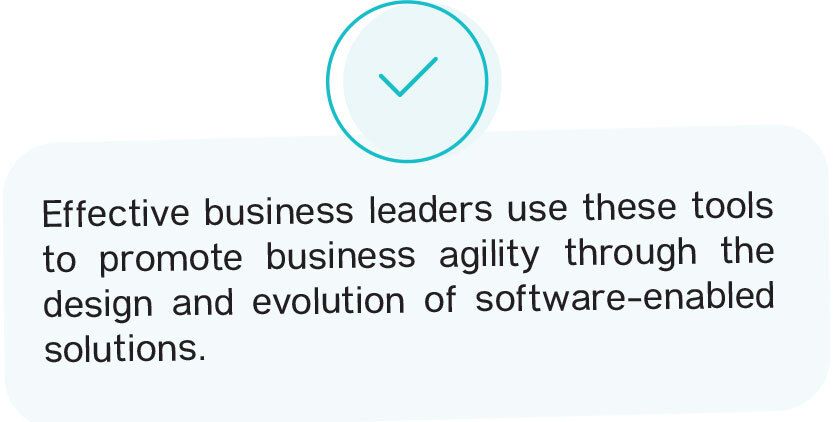
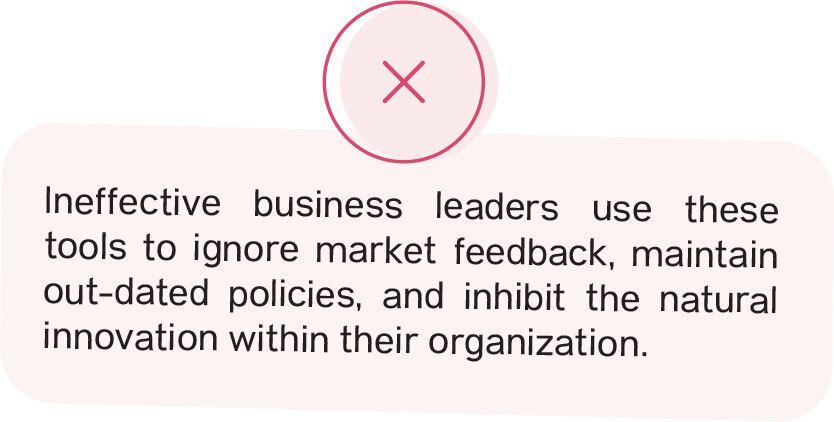
There are a few general approaches to navigating through a fog.
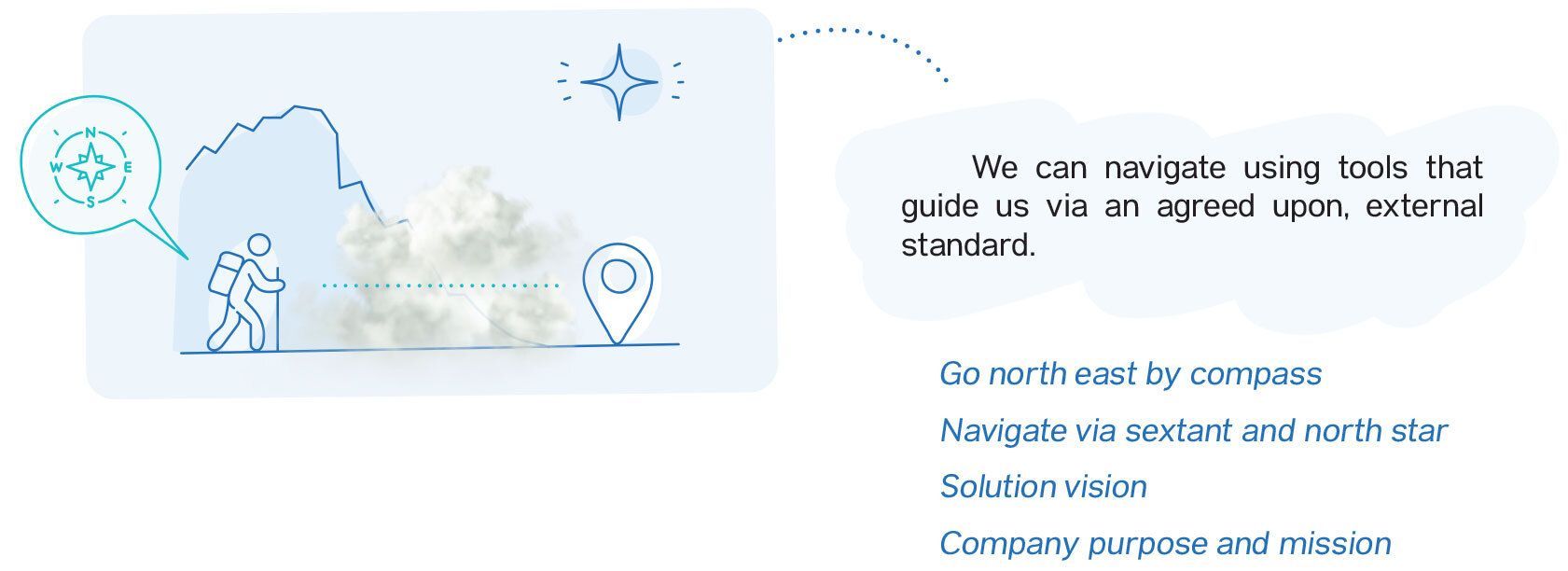

Together, these approaches provide guidance to brave navigators of the future.
While models, maps, and frameworks guide us through the fog, sustainable business leaders equally adept at navigating the terrain of the market.

Sustainable business leaders know that your final destination may vary based on what happens during your journey. Whether you call this a pivot or just a new choice, the result is created from using these models and adjusting based on the customer and market terrain.
There are six primary tools business leaders use to navigate the fog of uncertainty. Because this fog becomes more dense the further we project into the future and the farther we stray from our own solution, we organize tools in two dimensions:

Here is how three companies used these tools to navigate the fog:
AURIGIN SYSTEMS
Startups are frequently created with a clear vision: use break throughs in technology to distrupt mature industries and processes.
KNOWIFY
As startups grow, it is very easy for them to continue to add new features.
GE PREDIX
Mature companies serving mature markets must still evolve their solutions to remain relevant.
The challenge?
The fog that was cleared by the mature industry will return once the disruption begins.
The challenge?
Every company must make choices on how to adjust their pricing to reflect
their evolving solution.
The challenge?
Traditional forms of market research are often insufficient for strategic evolution of many sophisticated B2B solutions.
The solution?
Startups can leverage the existing Industry Lifecycle or create a new one to chart their own course.
The solution?
Growing companies can use the Solution Lifecycle to help them identify when pricing can—and should— be adjusted over time.
The solution?
Every company can use Prune the Product Tree to collaborate with their customers on the growth and evolution of
their solutions.
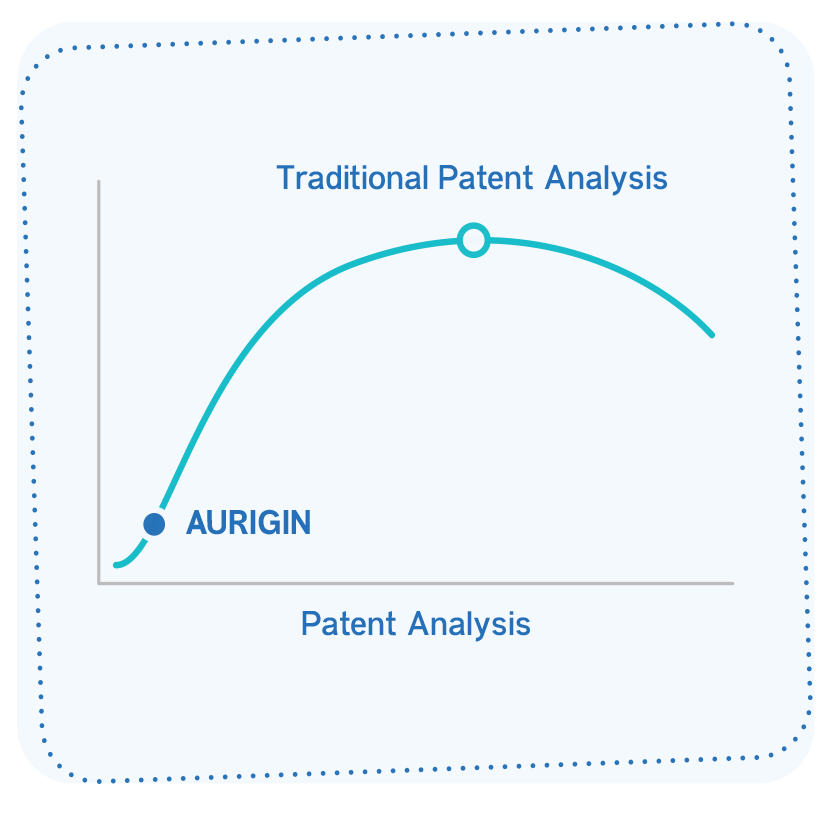
Leveraging the Industry Lifecycle
For hundred of years, patent analysis was a slow and costly process, often limited to patent attorneys. It was a mature industry, with a known problem, ripe for disruption.
Aurigin Systems saw an opportunity to use advanced data warehouse and search technology to distrupt this industry.
By reframing a critical industry, Aurigin secured millions of dollars in VC funding, and was acquired by an incumbent who wanted to gain the benefit of a newly reframed industry.
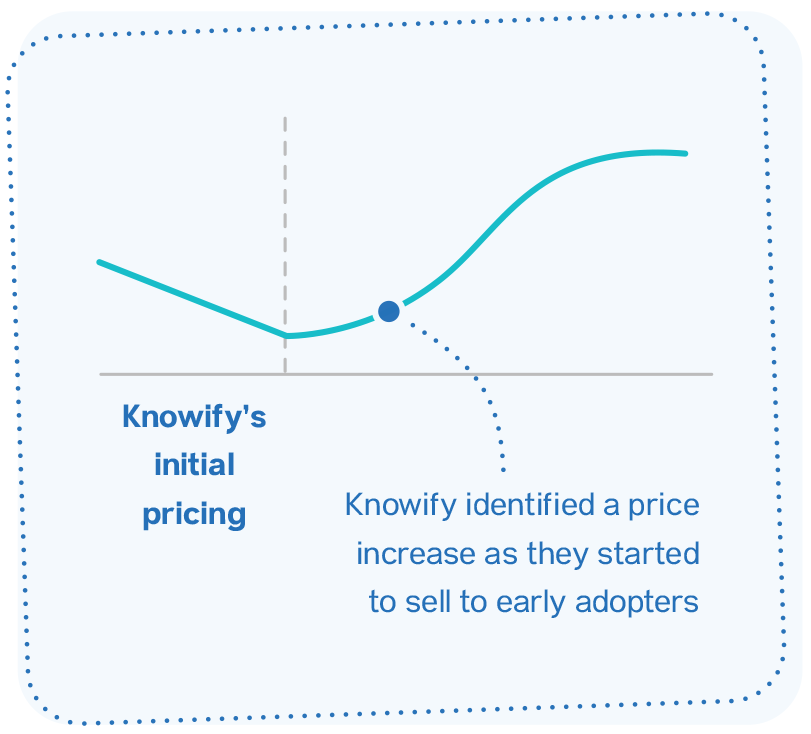
Using the Solution Lifecycle to Raise Prices
The first principle of the Agile manifesto states: “Our highest priority is to satisfy the customer through early and continuous delivery of valuable software”.
While inspiring, this principle fails to provide guidance on when a company should raise prices to account for the increase in value.
Knowify is a fast-growing SaaS platform that helps electricians, plumbers, and other trades, and construction companies, manage finances, subcontractors, and projects.
Knowify used the Solution Lifecycle to help identify that their solution had started to move from visionaries to early adopters. This change in buyer created an opportunity to raise prices to better reflect the increased value of the Knowify platform.
Clearing the Fog with Customer Feedback
The
GE Predix solution team wanted to obtain customer feedback on the evolution of the GE Predix platform. Working together, we organized a strategic marketing event in which groups of customers played
Prune the Product Tree to help.

01
The GE Predix solution team created an initial tree. A copy was given to each customer team.
02
Teams of five to eight customers pruned their tree. Customers were segmented by different kinds of manufacturing operations to identify segment-specific details.
03
Patterns of feedback in the results were analyzed to determine which adjustments GE should make to their roadmap.
04
The final results were captured in a new tree and a new roadmap.
Aligning Distributed Agile Teams Through Market Rhythms and Roadmaps
United Technologies Aerospace Systems (UTAS) faced a challenge common to large scale agile development: How should they organize the releases across hundreds of teams working on a complex solution based on sophisticated hardware and software?
The answer was found by analyzing the market rhythms of their customers’ customers.
UTAS makes the landing gear sub-assemblies for airplanes. Boeing and Airbus are two main customers. In turn, Boeing and Airbus sell airplanes to major airlines, such as United Lufthansa, or Turkish Airlines.
Through a very simple process, UTAS identified the market rhythms of the airlines, which included an understanding of the long development process of a new airline and the buying cycles of the biennial Farnborough Airshow. These rhythms, a key part of the UTAS agile roadmap, helped align hundreds of agile teams on a common objective.

This article is excerpted and adapted from the book Software Profit Streams™ by Jason Tanner and Luke Hohmann.
This content was originally published in the Feburary, 2023 Edition of Emergence, The Journal of Business Agility. It has been republished here with the permission of the publication.
What is Emergence?
Emergence is the Journal of Business Agility from the Business Agility Institute. Four times a year, they produce a curated selection of exclusive stories by great thinkers and practitioners from around the globe. These stories, research reports, and articles were selected to broaden your horizons and spark your creativity.

